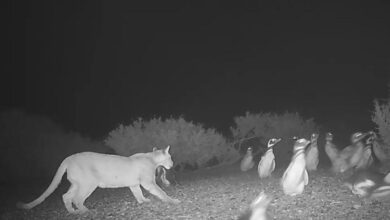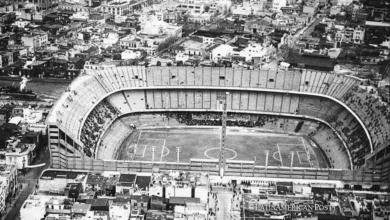Argentina’s Missing Painting Sparks Hunt for Nazi-Looted Art and Unburied Truths

A forgotten portrait, a suspicious real estate photo, and a name from the Third Reich have launched Argentina into a high-stakes search for Nazi-looted art—reviving questions about war, memory, and the ghosts that still hang on living room walls.
A Clue Hidden in a Listing
It started not in a gallery or archive, but in the quiet churn of the internet. A Dutch journalist browsing real estate listings in Mar del Plata spotted something that didn’t belong: a woman’s face, painted centuries ago, hanging on a modern wall. The image matched a long-lost portrait—Contessa Colleoni by Giuseppe Ghislandi—registered for decades as missing, believed to have been looted by the Nazis.
The tip sent Argentine investigators racing. Police raided a coastal property linked to Patricia Kadgien, daughter of Friedrich Kadgien, a senior Nazi official who escaped to Argentina after World War II. They were chasing what could have been the most significant recovery of looted art on Argentine soil in years.
But when officers stepped into the home, the frame was empty. The painting wasn’t there.
The search widened. Authorities raided four more homes connected to the Kadgien family. Two other 19th-century artworks surfaced. But Contessa Colleoni—the centerpiece—remained missing. A portrait hidden in plain sight had turned into a more profound mystery: how does a painting disappear when the world is looking straight at it?
The Long Trail from Amsterdam to Mar del Plata
If the canvas is authentic, its story begins in the gallery of Jacques Goudstikker, a Dutch Jewish art dealer who died fleeing the Nazis in 1940. His collection—more than a thousand pieces—was seized by the Third Reich. Some have been returned through long battles waged by his heirs. Others remain lost in private hands, swapped, inherited, or hidden.
According to Dutch reports, documents link Friedrich Kadgien to the missing Ghislandi, suggesting the painting may have crossed the Atlantic with him as he fled postwar Europe. Kadgien died in 1979. But the questions left behind—about what he brought, what he went, and what his family knew—have not faded.
Argentina’s postwar entanglement with fleeing Nazis is well known, from secret migration routes to whispered inventories of what was carried in crates and trunks. Some items were innocuous. Others were art. Looted, stained, missing. The trouble is that once these objects enter private homes, they fall out of view. Museums can publish provenance. Families rarely do.
Even when a match is flagged by a database, it takes more than suspicion to bring a work home. Courts require a chain of custody. And after war, exile, and death, those links are often broken.
Law, Memory, and the Burden of Custody
The case now straddles legal and moral territory.
Following the raid, a federal judge placed Patricia Kadgien and her husband under house arrest. The order is temporary—for now, 72 hours—but investigators believe the couple may have obstructed the search. Prosecutors are preparing charges under an extraordinary statute: “concealment of theft in the context of genocide.”
That charge reframes the issue. It doesn’t treat the portrait as just property—it frames it as evidence of a crime without expiration. The Holocaust, in this legal view, isn’t just history. It’s a structure that still casts shadows, and Argentina—knowingly or not—is standing in one.
Restitution is rarely just about ownership. It’s about naming a harm, acknowledging a theft, restoring what silence tried to erase. Even a house arrest carries symbolic weight: a message that the state will pursue the truth, even if the canvas stays missing.
But the question looms: Where is it?
Was the portrait sold? Hidden? Damaged? Misattributed and hanging somewhere under another name? The empty frame in Mar del Plata becomes a metaphor: for the secrets families keep, for the blind spots nations inherit, and for how easily something precious can vanish without leaving.
The Search Widens, the Mystery Deepens
This case is no longer just a missing painting. It’s a mirror reflecting Argentina’s unresolved wartime past.
The country has spent decades wrestling with its role as a postwar refuge for Nazi fugitives and collaborators. Each new discovery reopens that reckoning. A living room becomes a crime scene. A sale listing becomes a thread. The past breaches the present with unnerving ease.
There’s also something profoundly modern about this particular unraveling. The fact that a journalist found the painting in an online real estate photo speaks to how digital life is reshaping art recovery. Once, provenance research meant scouring archives and shipping ledgers. Now, it includes reverse image searches and viral posts. A screenshot can become a breadcrumb.
And yet, even technology has limits. A picture on a wall is not a signature on a deed. Courts still need proof. And time, as always, works against those who seek answers.
For now, the investigation continues. The couple under house arrest will face questioning. The two newly discovered paintings will be tested. Prosecutors will sift records, chasing leads through a thicket of inheritance and half-truths.
Somewhere, the Contessa Colleoni may still hang. On a wall, in a safe, beneath a sheet. Perhaps in the home of someone who doesn’t know her name—or worse, someone who does.
If she resurfaces, it will be more than an art-world curiosity. It will be a moment of return. A fragment of justice. A portrait reclaimed from silence.
Also Read: Colombia’s War Now Falls from the Sky: Drones, Fear, and a Buzz That Kills
And if she doesn’t? The absence will remain its own kind of testimony: a reminder of what was taken, what was hidden, and how long nations can live with ghosts before they decide to name them.





